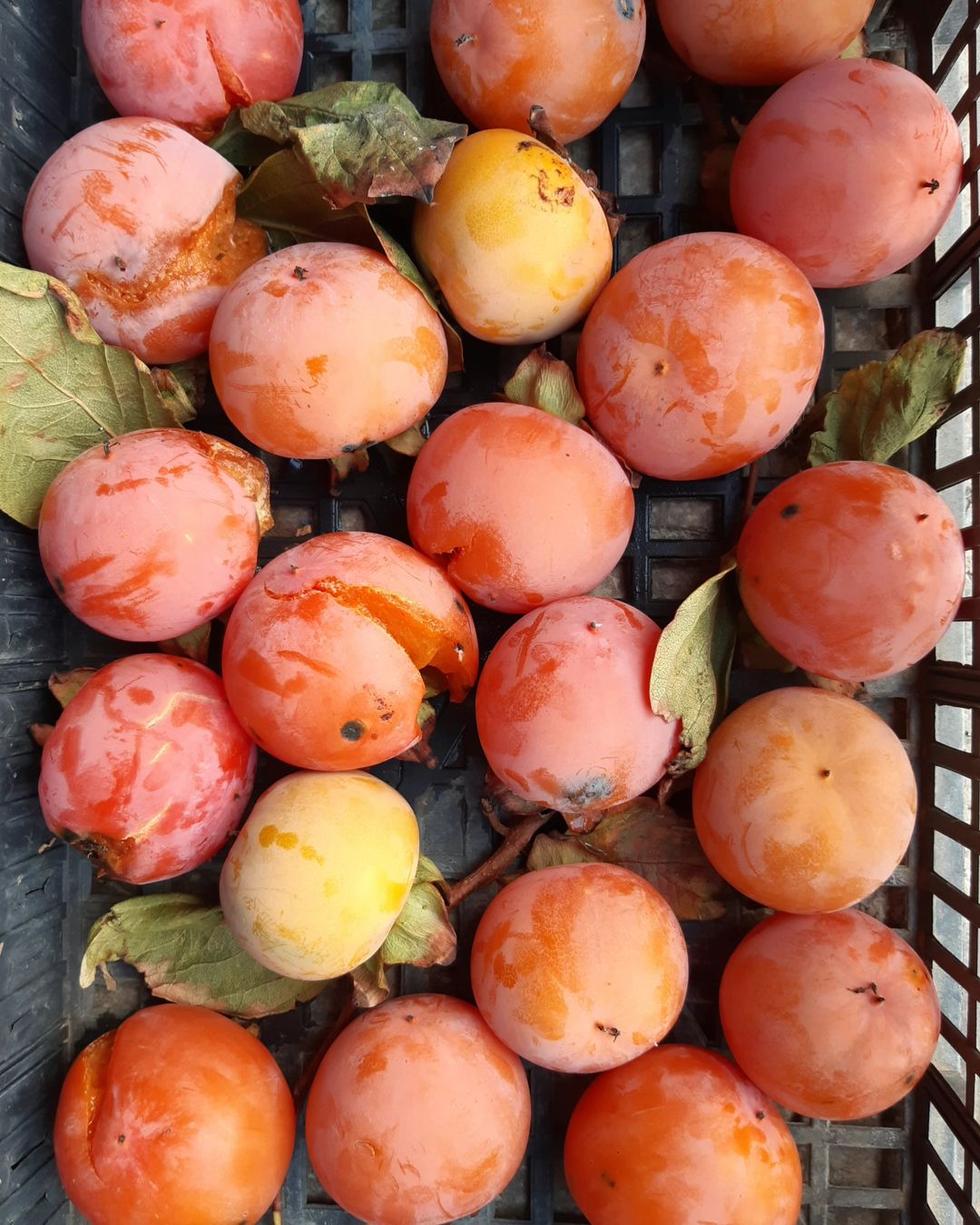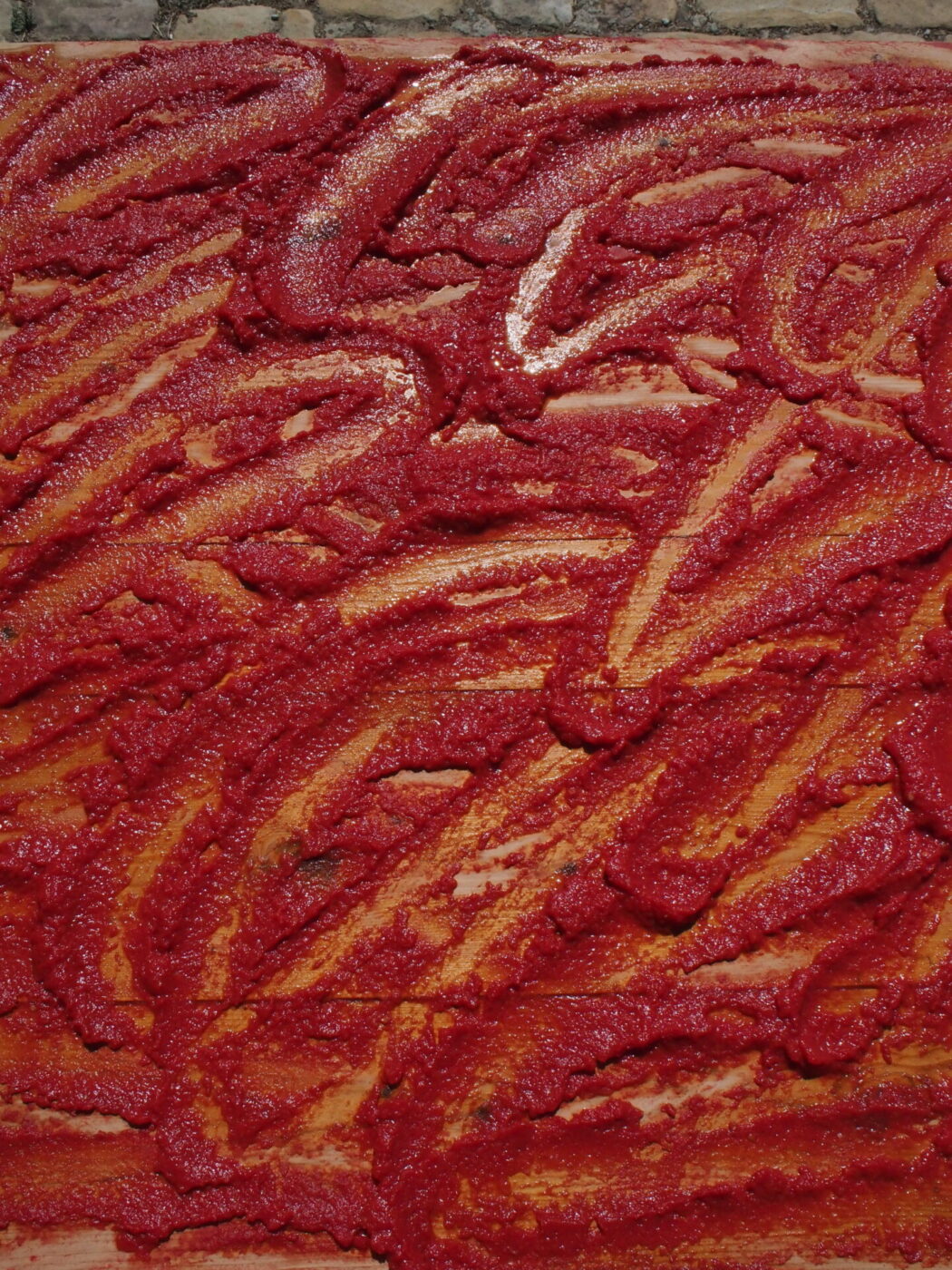It’s the end of August in the rural and remote center of Sicily. A landscape of infinite gentle, brown-golden hills, different shades of parched, with a house sprinkled here and there rolls into the distance. It makes you feel kind of lost in a labyrinth, unsure of where the hills begin or end. During this time, we follow traditional Sicilian methods to preserve tomatoes and other local summer fruits and vegetables. The Sicilian sun is the most precious resource we have, and our greatest tool during this busy week. With its power, we make sundried tomatoes, zucchini, and figs.
Giovanna, a middle-aged Sicilian woman with oceanic eyes and a slightly stooped posture, has worked in the kitchen of cooking school Anna Tasca Lanza, where I’m employed, for 30 years. She’s a tough nut to crack, but it’s well worth the effort. While we spread zucchini slices to dry, she recalls times during her childhood that food wasn’t as abundant as it is today. Her mother used to make a lot of preserves to tide them through the lean winter months. “In summer, my mother used to make melanzane sott’olio and peperoni sott’aceto, caponata, salsa pronta, fichi secchi, estratto and pomodori secchi,” she recalls. “In winter, for dinner, we would open a jar of caponata, some bread e via, a meal was served.”
At that time, preserving seasonal fruits and vegetables was a necessity. Families were big, and the food available was more or less what one family grew for itself. Giovanna tells me that every family used to have a garden and some animals–mostly chickens, maybe some pigs, and sheep for milking. Supermarkets as we know them didn’t exist, and people could only afford to buy packaged food on special occasions. Oddly enough, homemade was the normality, packaged was the exception.
Therefore, summer–with its colorful, nutrient-rich, and tasty ingredients–was made to last year-round, its bountiful harvest stretching across another eight or nine months. Figs and mulberries were jammed, capers salted, and tomatoes turned into passata and salsa pronta. Sun-drying was, and is, one of the easiest ways to preserve, and I like to think that it is not only the ingredients that are being bottled, but also the rays of summer sunshine.
People like Giovanna, who continue the Sicilian tradition of preserves, don’t do so from necessity anymore, but the cook finds joy and satisfaction in producing them with her own hands and maintaining and carrying on the knowledge her mother taught her.
Preserving is tough work: you need to be prepared to cut, process, and bottle kilos on kilos of fruits or veggies, because there’s no point in preserving two tomatoes and four zucchini. It needs to be done alla grande. If, by the end of the day, you don’t feel like running to the supermarket for some ready-to-eat preserve gratification and never making them by hand ever again, then you haven’t made enough.
I encourage everybody, however, to put themselves through such an operation at least once in their lives. Despite the hard work, it’s a moment to chat and enjoy the company of friends, to work side-by-side with sometimes family, sometimes strangers. I find that it’s an old-school style of socialization that’s genuinely cheerful, beautifully innocent, and pure. And no matter what your relationship is at the beginning of the day, by the end, you become a team. An age-old ice breaker, everybody becomes friends after a day spent preserving together: there is something very powerful about food, encouraging us to leave our prejudices behind, and to share and build something in community.
You don’t need to be in Sicily to preserve the bounty of summer yourself. Wait till the weather is hot, find some outdoor space with direct sunlight and a couple of trays, and follow these directions to taste the sunny flavors of summer all year long:
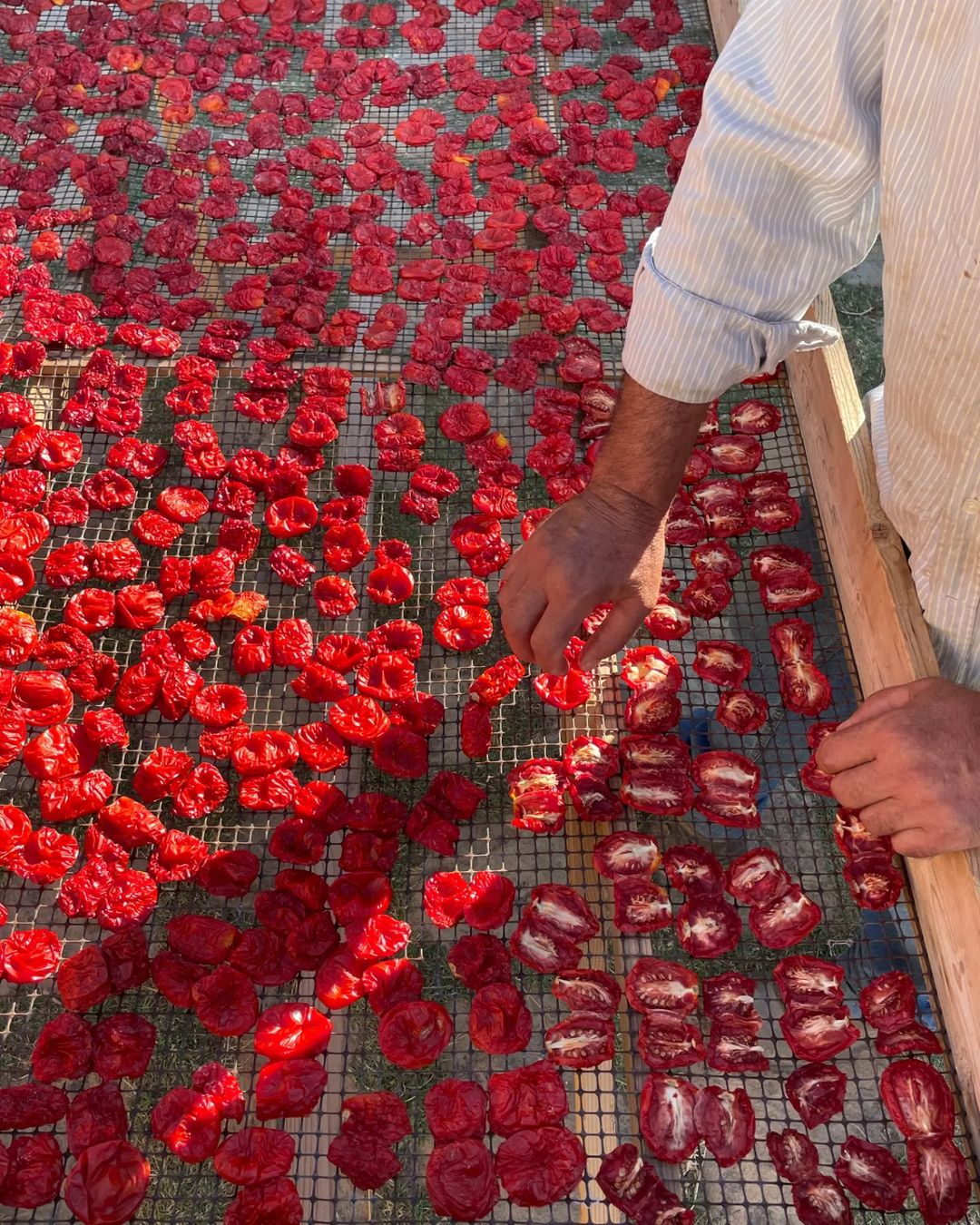
Courtesy of Anna Tasca Lanza
ZUCCHINE E POMODORI SECCHI SOTT’OLIO (ZUCCHINI AND SUNDRIED TOMATOES UNDER OIL)
Sott’olio, which literally translates to “under oil”, is a whole genre of preserves that Italians often enjoy for aperitivo, as antipasti, or in salads. Some vegetables need to be sun-dried before being soaked in olive oil, and others, like eggplants or artichokes, just need to be blanched raw.
Zucchini:
Slice the zucchini, ideally with a mandolin (a knife takes you forever and the slices won’t be consistent). Salt them abundantly and massage them with your hands to spread the salt all over. Place a cloth over a drying rack, and spread the slices on top. Put it out in the sun to dry. If it’s very hot, they can be ready in half a day, but they should take no longer than two days. Make sure to put them in your house at night so they don’t catch the evening dew.
When they’re dry, blanch them in water with some vinegar, garlic, and cloves, just for a few seconds. Strain and spread them on a cloth in your kitchen and pat dry. Now they’re ready to be jarred: add zucchini to jars, top off with olive oil, and dress them as you want. We like to put oregano, peperoncino, basil, and some sliced or whole garlic. They don’t have to be pasteurized afterwards; the olive oil will preserve the vegetables, and they can last for one or two years in your pantry.
Sun-Dried Tomatoes:
The sun-drying process is very similar here. Cut the tomatoes in half, but not all the way through: you should be leaving a sort of hinge so they can sit open like a book. Put them to dry, face side up, and sprinkle a good amount of salt on top. Dry for around 4-5 days; you can turn them to face down by day two. After this, it’s all the same as zucchine, but remove the vinegar when blanching them.
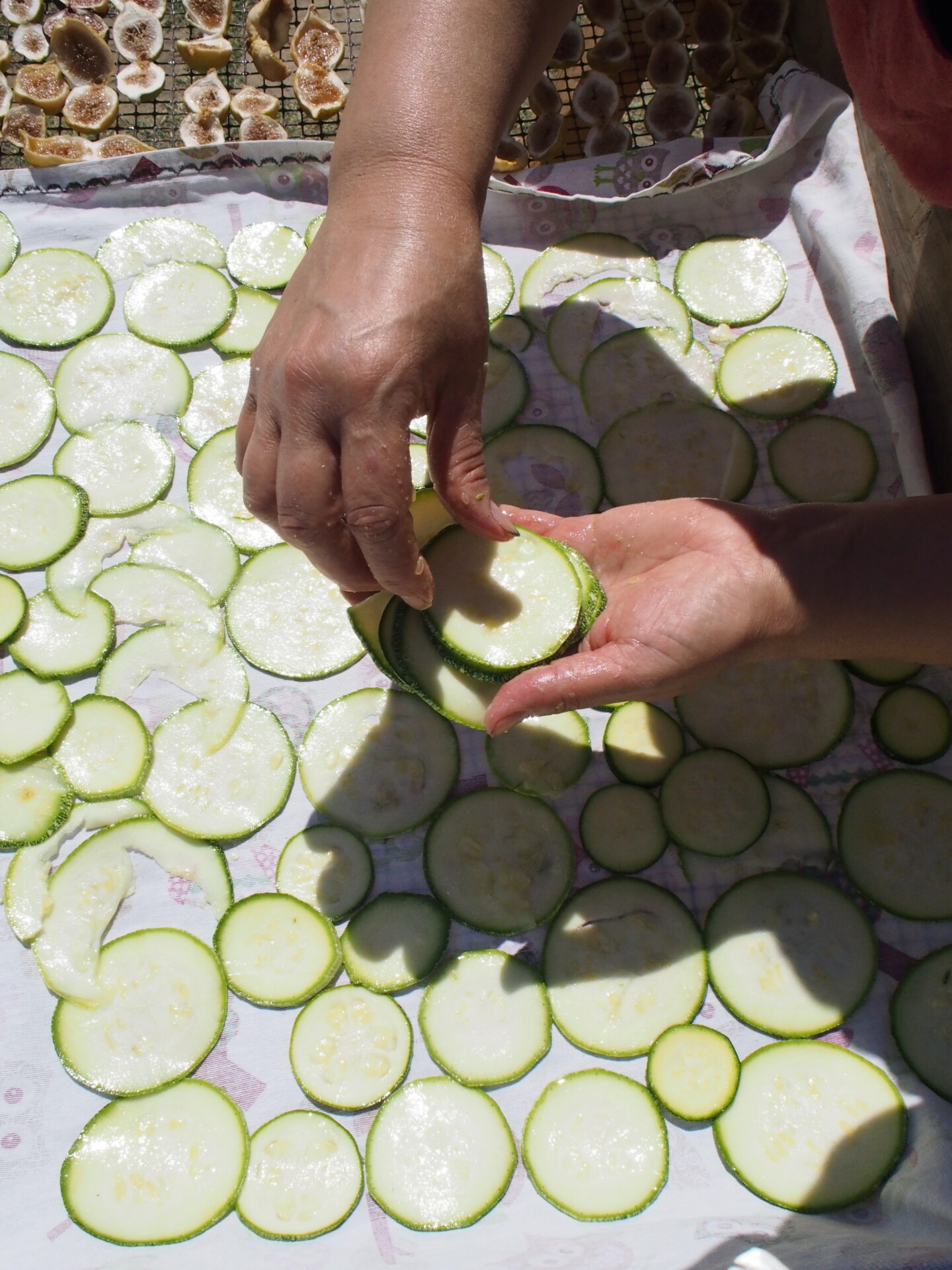
ESTRATTO DI POMODORO (TOMATO PASTE)
Tomato paste is the most ancient tomato preserve in southern Italy, the mother of canned tomato sauce (what would we do without her!). Before pasteurization techniques were discovered and when bottles weren’t readily available to hold liquid sauces, Sicilians would dry tomato juice to create a dense, flavorful, and concentrated tomato paste–kept simply in the pantry wrapped in a cloth. The paste was then used during wintertime to make tomato sauce. Sauté some onions, boil a bit of the paste with water until it becomes saucy, and voila.
In the 1950s and 60s, bottling fresh tomato sauce finally became easily possible, and Sicilians began to substitute the estratto preserve for the sparkling sauce. Today, it’s very rare to find people who still make estratto at home. I mean, there’s no point in making a tomato sauce out of estratto now that we have the bottled stuff everywhere, right? Those who hold onto the knowledge of estratto, however, have found different uses for the paste: used in small quantities, estratto can add a deep umami flavor, enriching the likes of soups, long-cooked meats, and fish stews. Zuppa di tenerumi e cucuzza, ragù di carne, spezzatino di agnello, and calamari ripieni all work great with a spoonful.
To make estratto, cook tomatoes until they release a large amount of juice. Strain them, getting rid of as much water as possible, and mill them in a food processor, separating the skin and seeds from the pulp. This pulpy juice has to be generously salted; at the school, we use approximately 13 grams of salt for every one liter of juice. This is the mixture that you must dry on top of wooden tables or any flat wooden surface. The mixture needs to be stirred almost every half hour with a spoon; the canals made by the spoon will help the water come out and evaporate. As this is a deeply concentrated paste, you’ll lose a lot of bulk: the final product should be thick but not dry. This year, we began with seven tables of tomato juice: by the end of the day, after 10 hours drying, the result was just one table of estratto. When it’s finished drying, add to a jar with a thin layer of olive oil on top. We think it can last endlessly in your pantry, though none of us can confirm, because we always eat it all within the year!
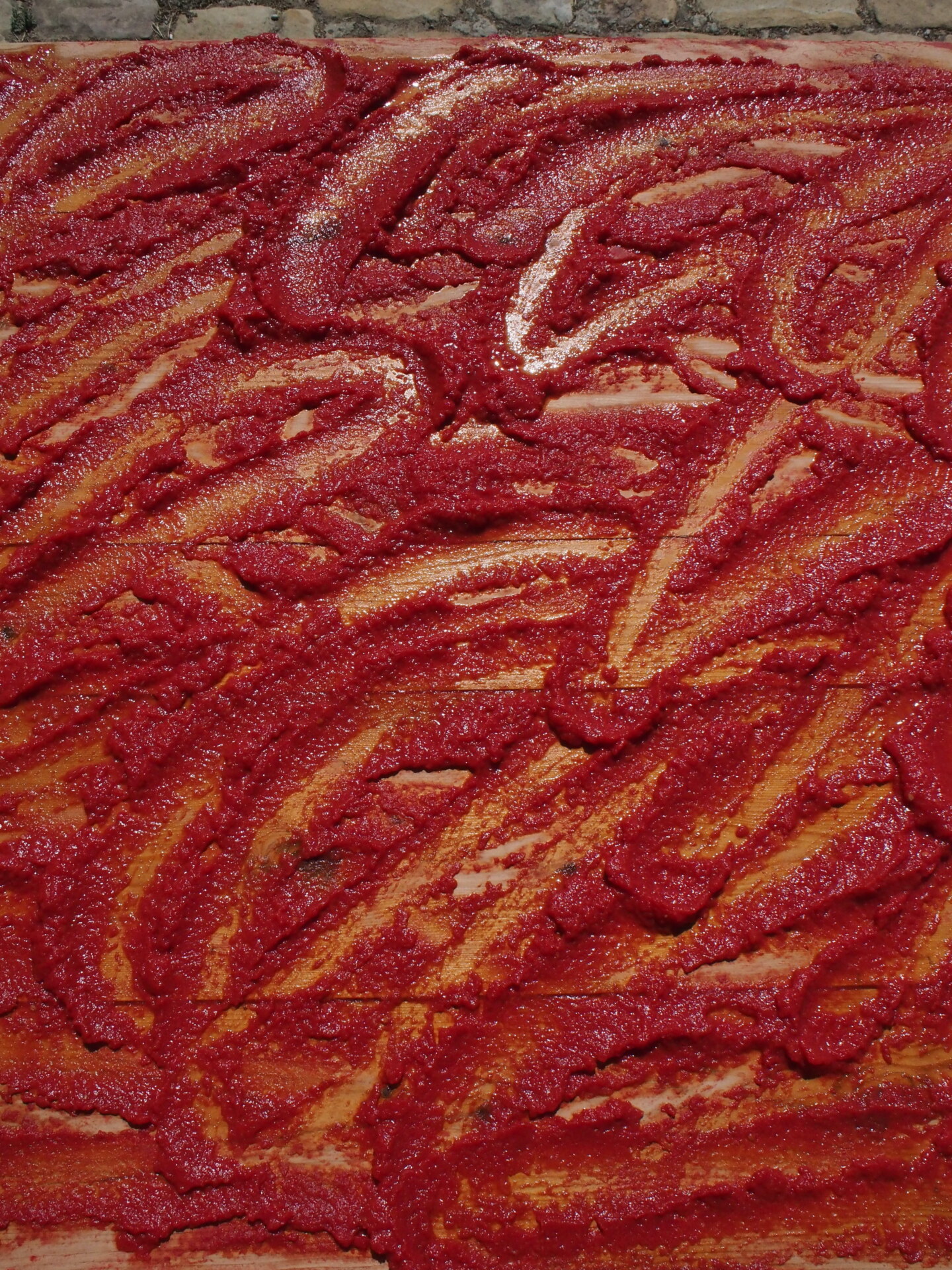
FICHI SECCHI (DRIED FIGS)
Take a bunch of ripe figs, of any variety, and cut them as you would the tomatoes–not all the way through. Put in the sun to dry, face-up, but don’t salt! The fruits should take 4-5 days to dry, and can be flipped after two days.
In this area of Sicily, people like to blanch them, once dry, in a special infusion: in a boiling pot of water, Giovanna adds an orange peel*, carob pod, bay leaf, and a dried flower that every local mysteriously calls fastunacchedda. (It’s most likely a wild carrot flower, but nobody has ever been really able to tell.) Bring everything to a boil and blanch the figs in the infusion. You can dunk each fig in the water individually, or tie a group of figs together with a needle and twine to make a treccia di fichi. (First timers are probably better off going with the former.) The treccia is usually made so that the figs can be kept hanging in the kitchen or in the cellar. Since the fruits are dry and super sweet, they last at room temperature. That said, depending on where you live, little worms may come for them, so many forgo the treccia and freeze the figs after blanching.
Showing me how to tie them up, Giovanna explains, “The treccia makes sense only when you dry a lot of figs, which we used to, because pane e fichi (figs and bread) was what we ate for dessert in winter. We also kept them to make buccellati cookies for Christmas.”
*Giovanna tells me that local women of her generation always dry orange peels at home. Anytime they eat an orange, they’ll peel it into a spiral before hanging it to dry, and using it for both sweet and savory preparations.
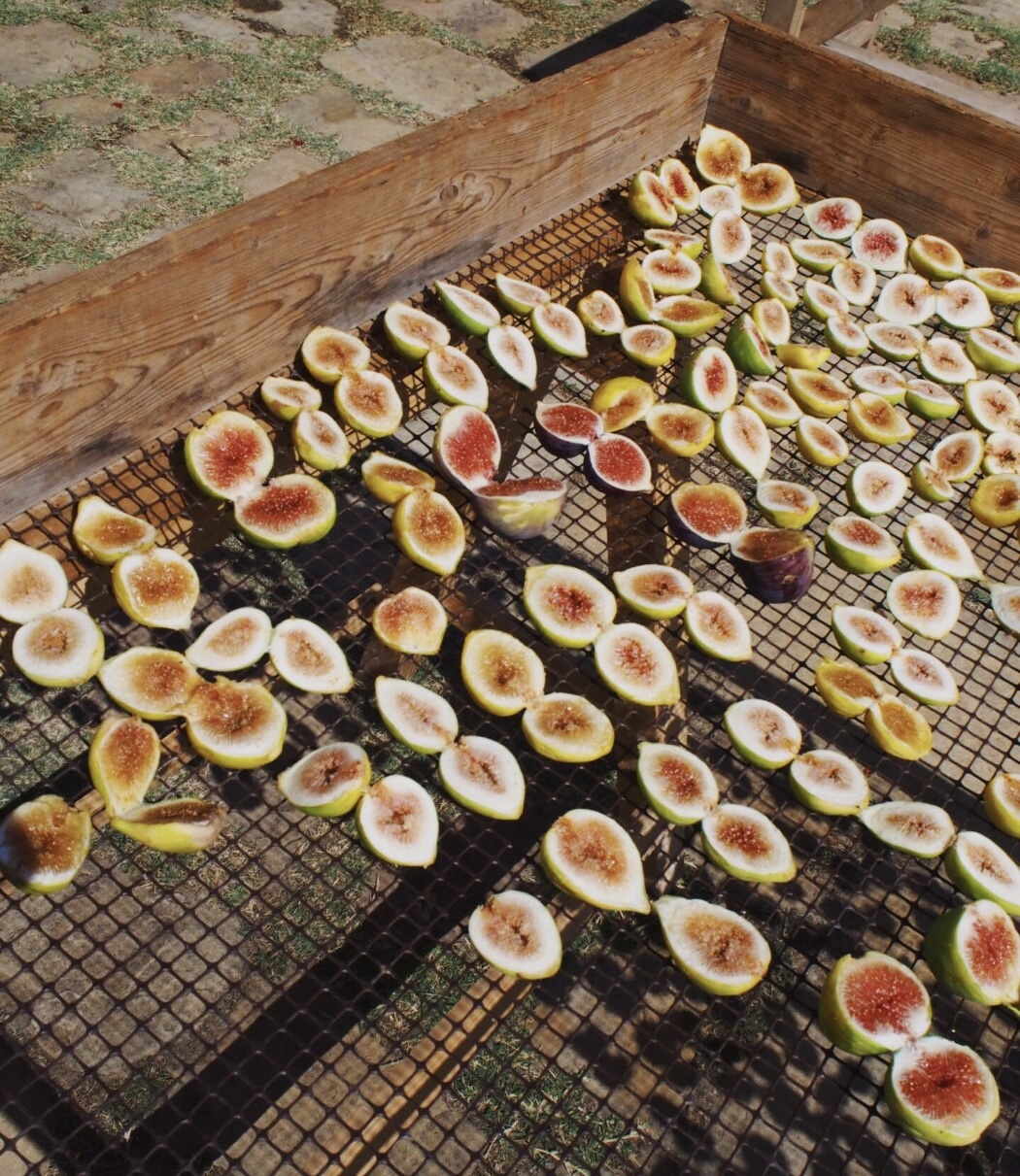
These preserves are testimony to a generation that couldn’t entertain the thought of wastefulness. And though these recipes may be unnecessary in our times of abundance, there are more than a few reasons to keep them alive, may it be the willingness to capture the sun’s rays, the joy of chatting with a friend while you tie some figs, or the remembrance of the Sicily our predecessors came from.
